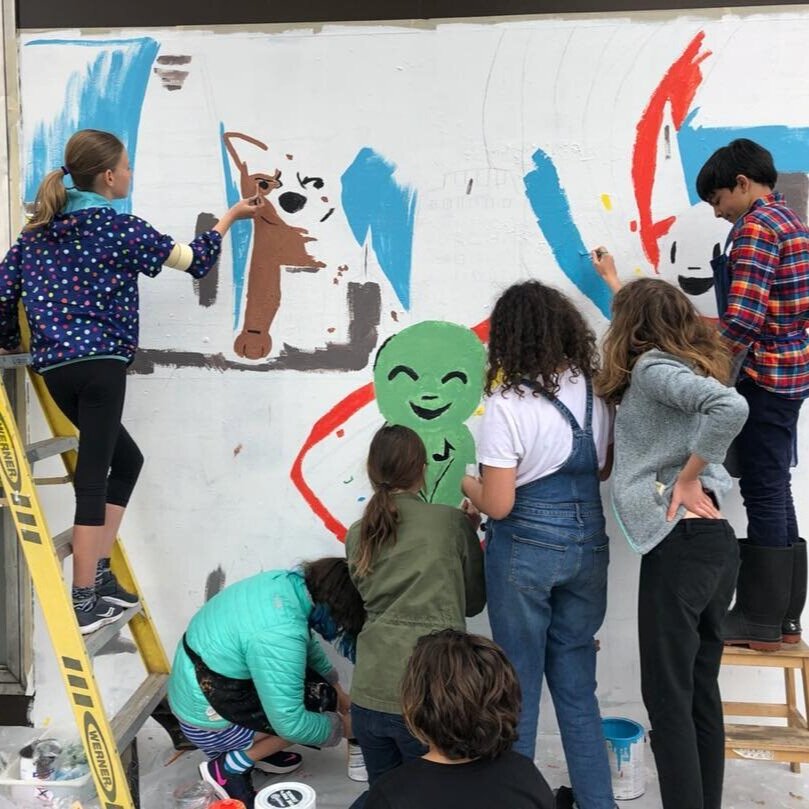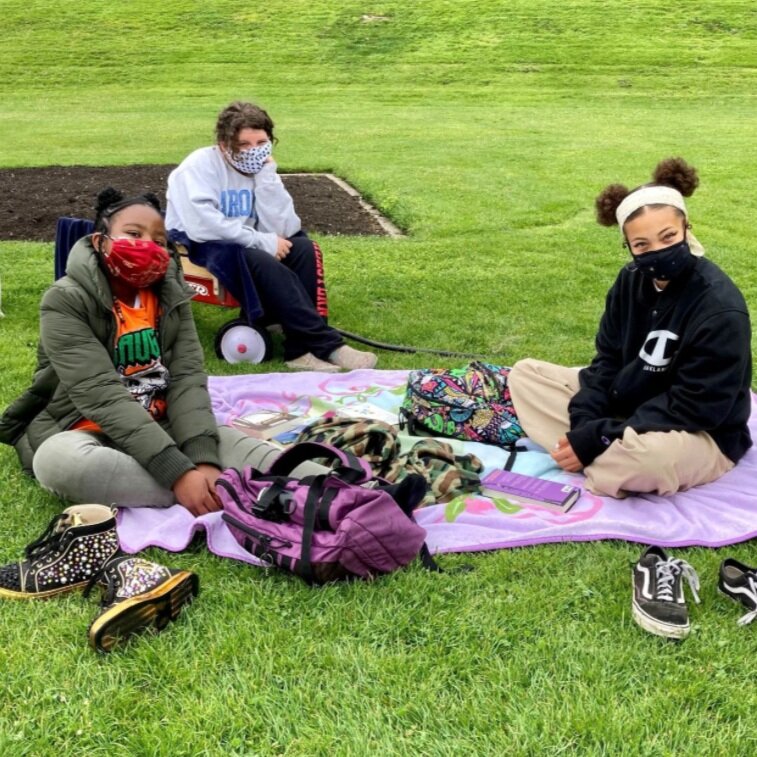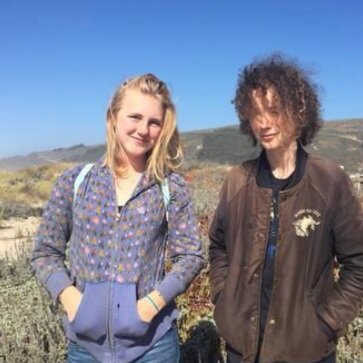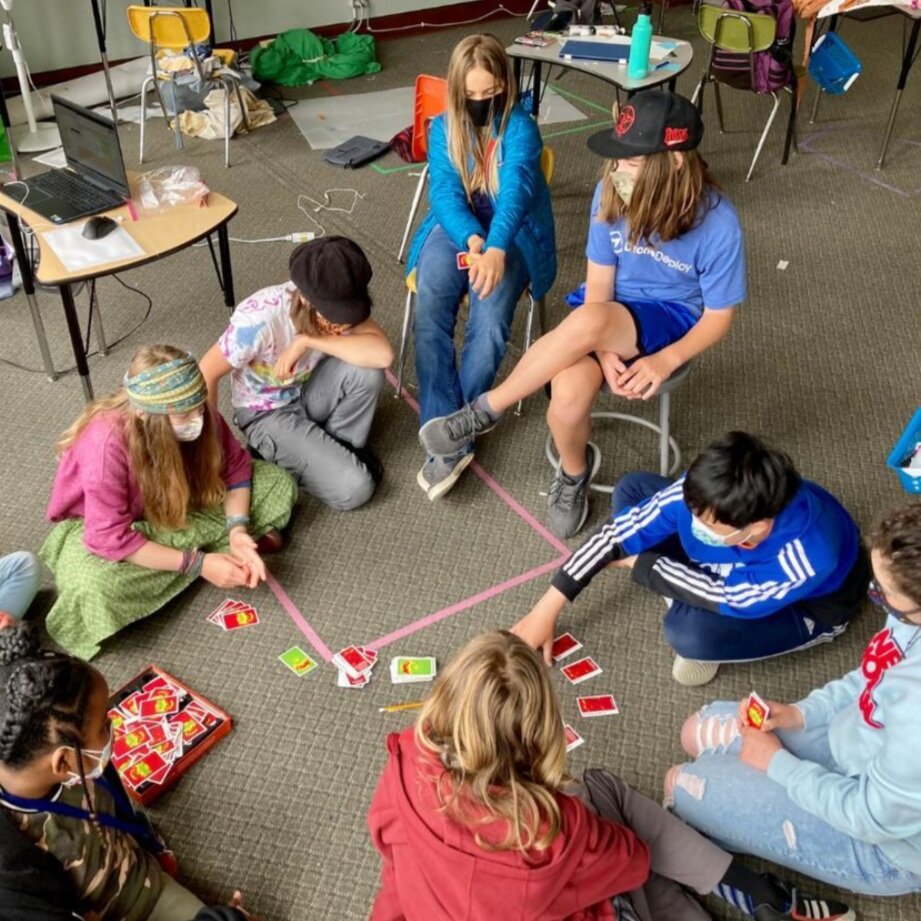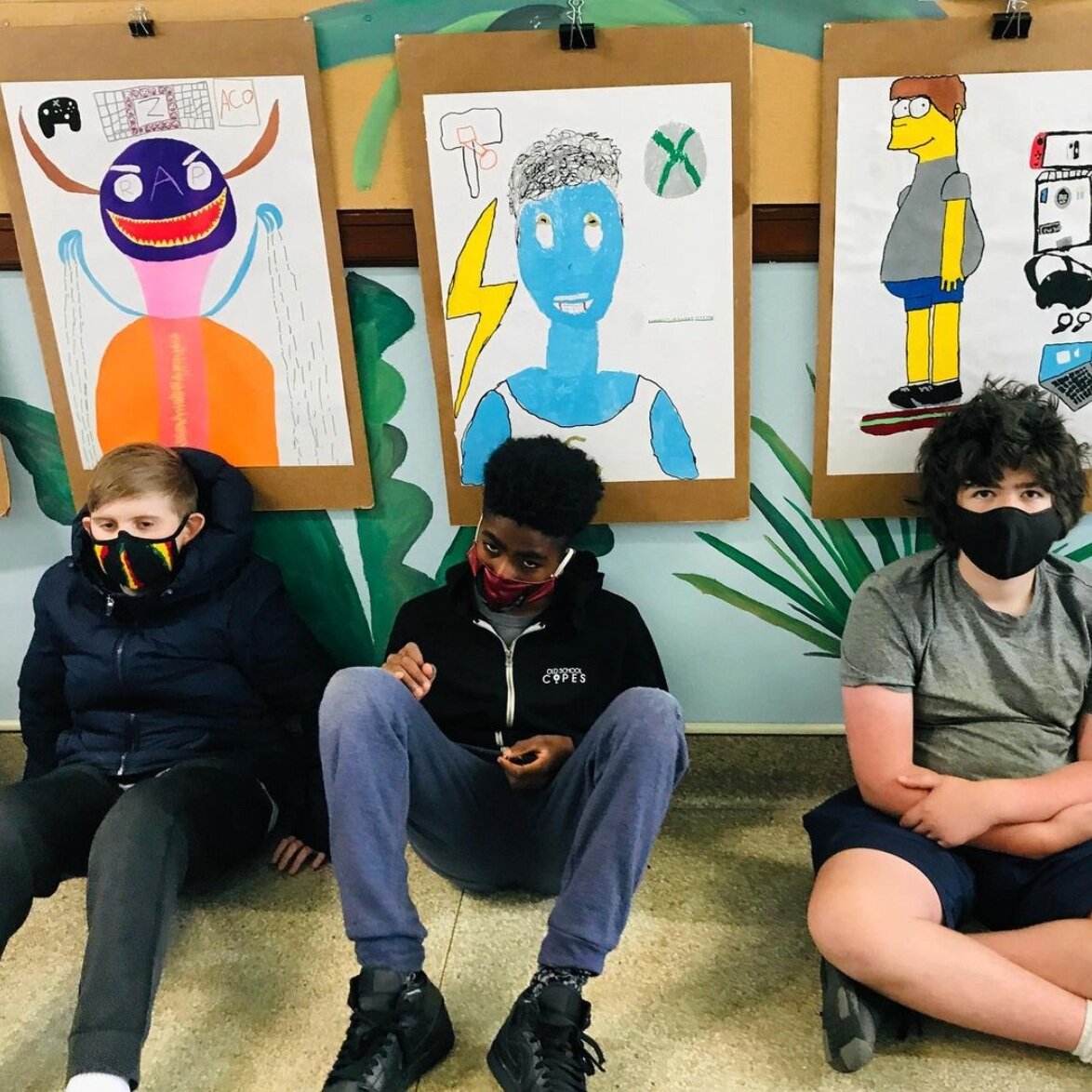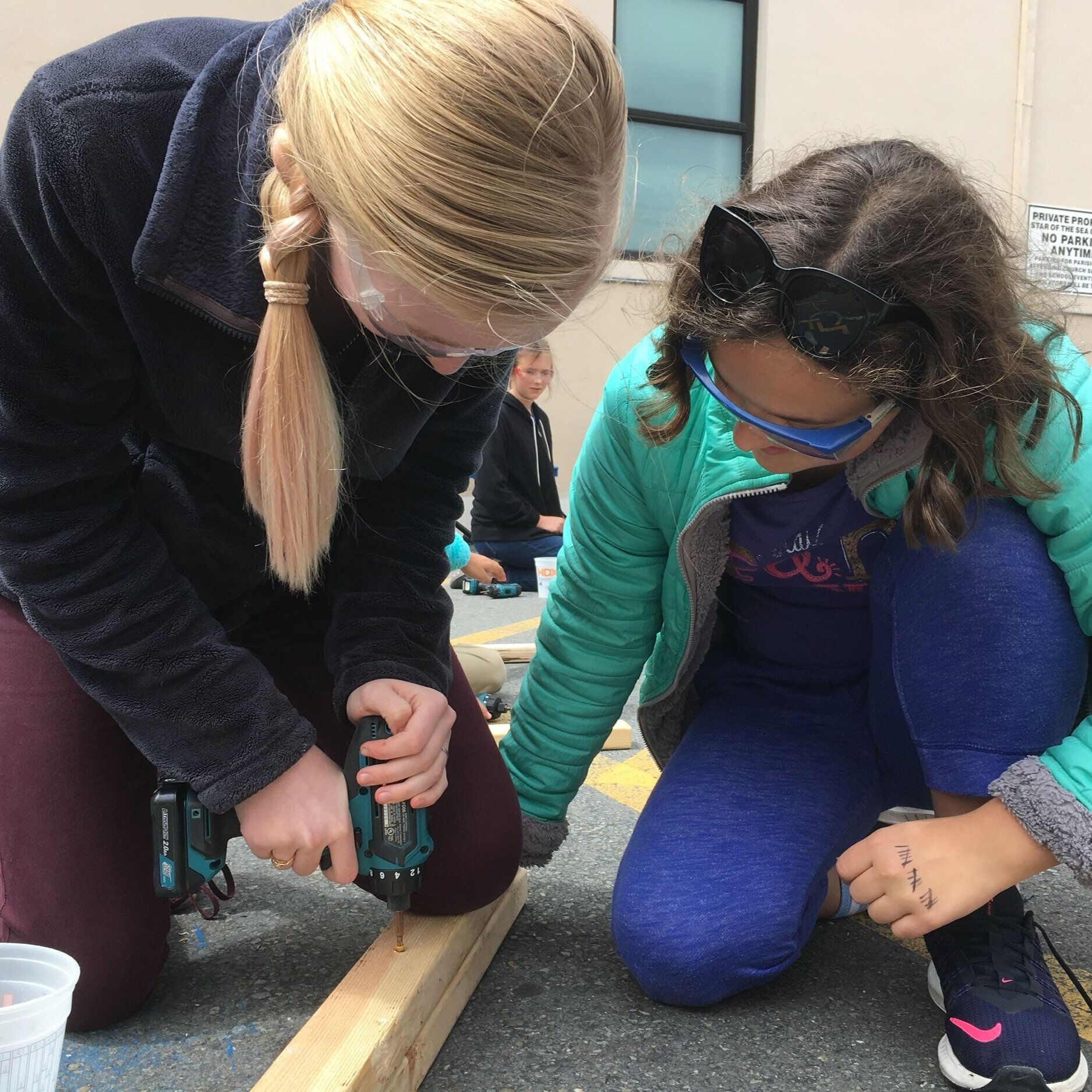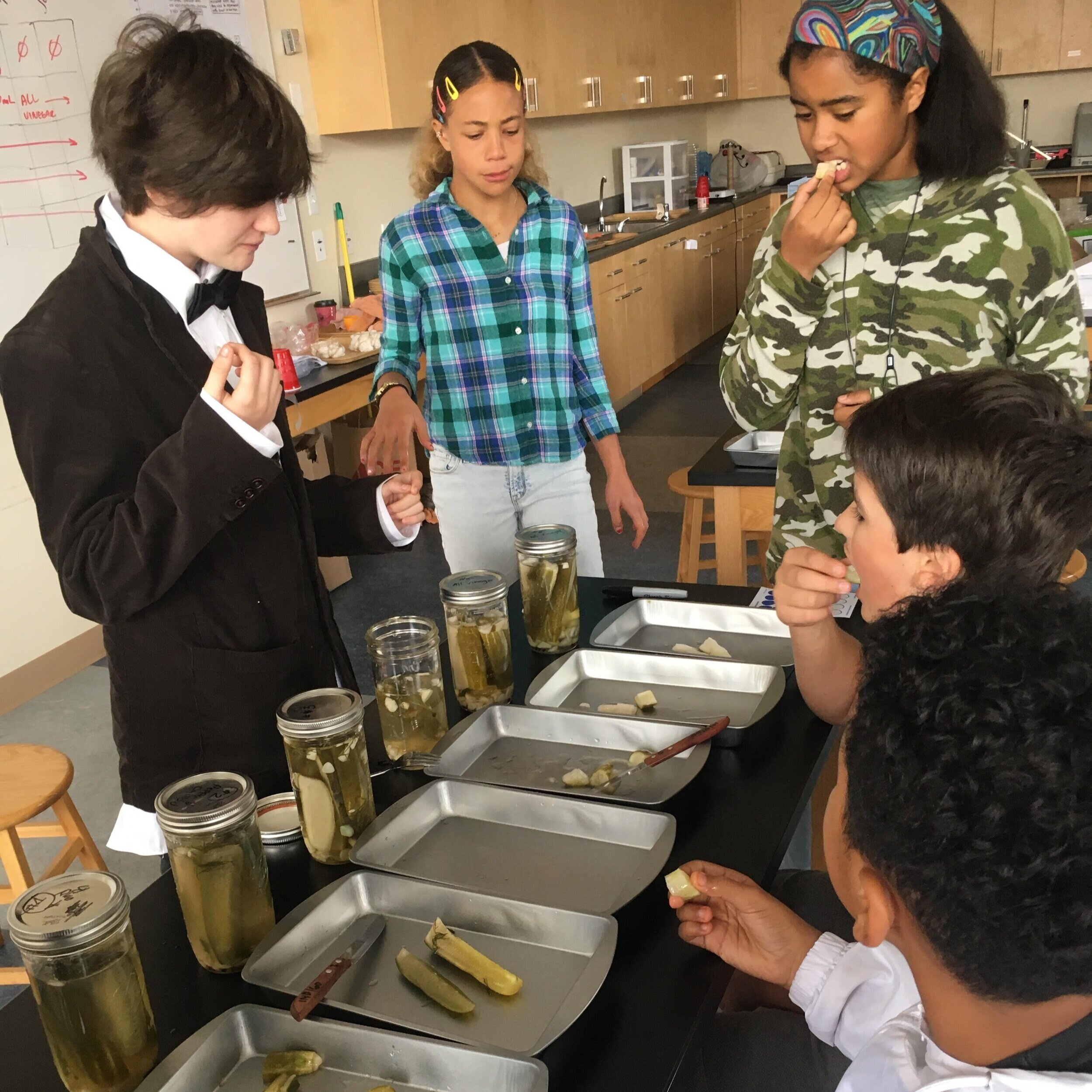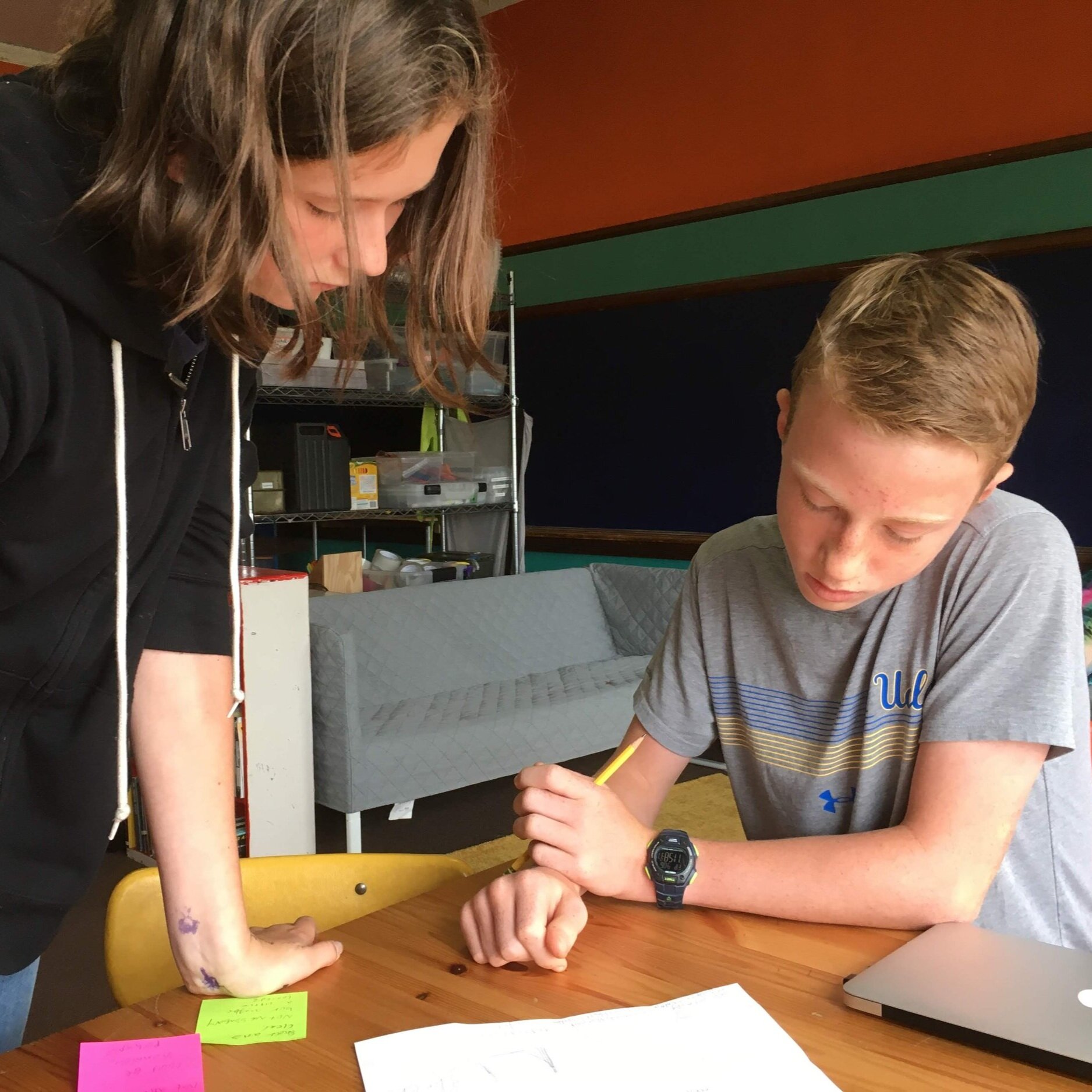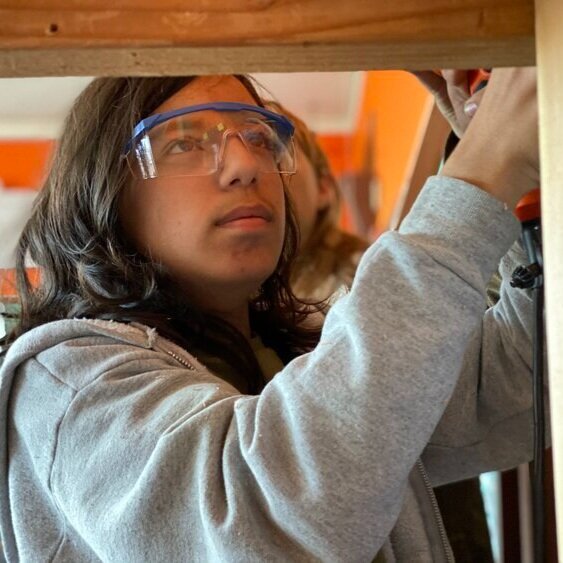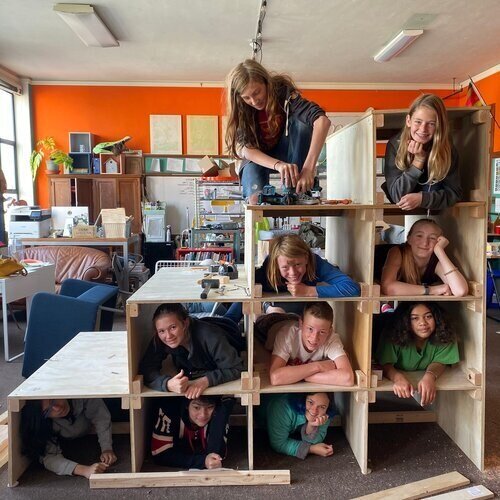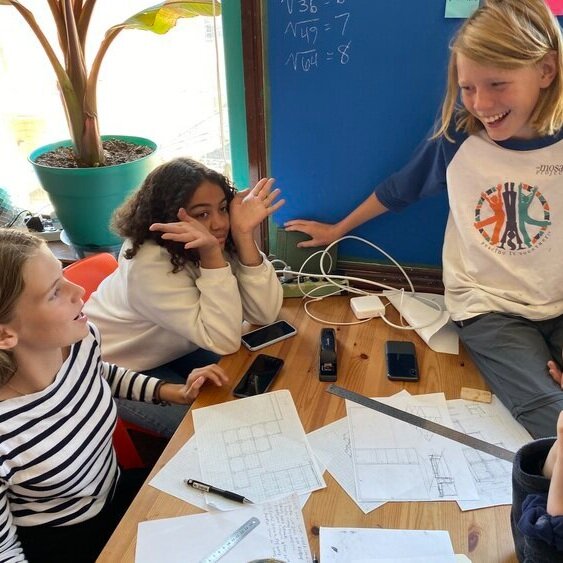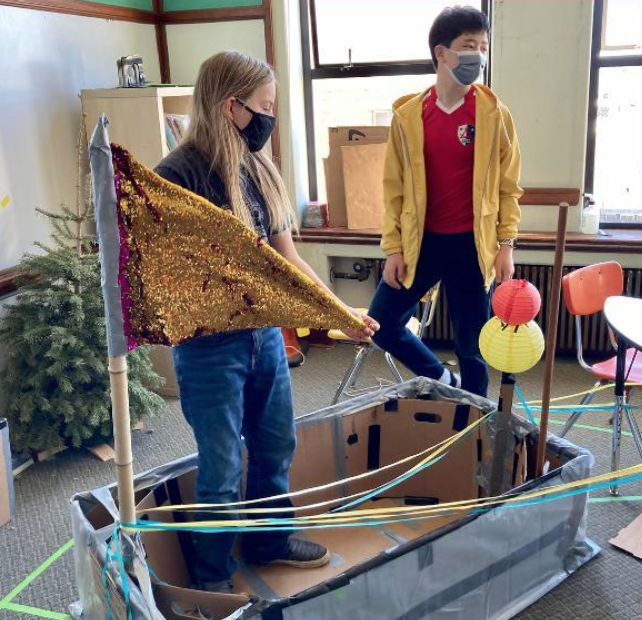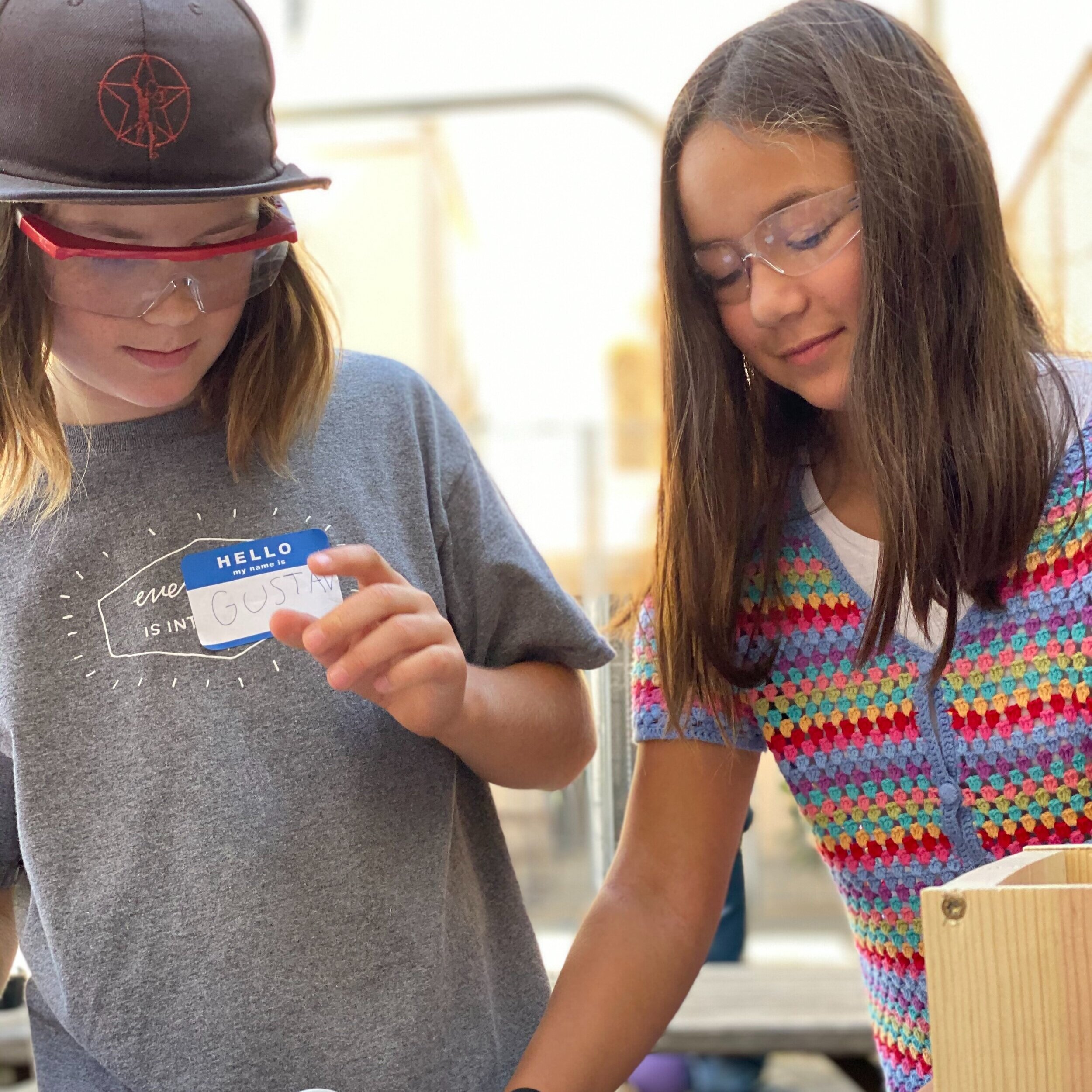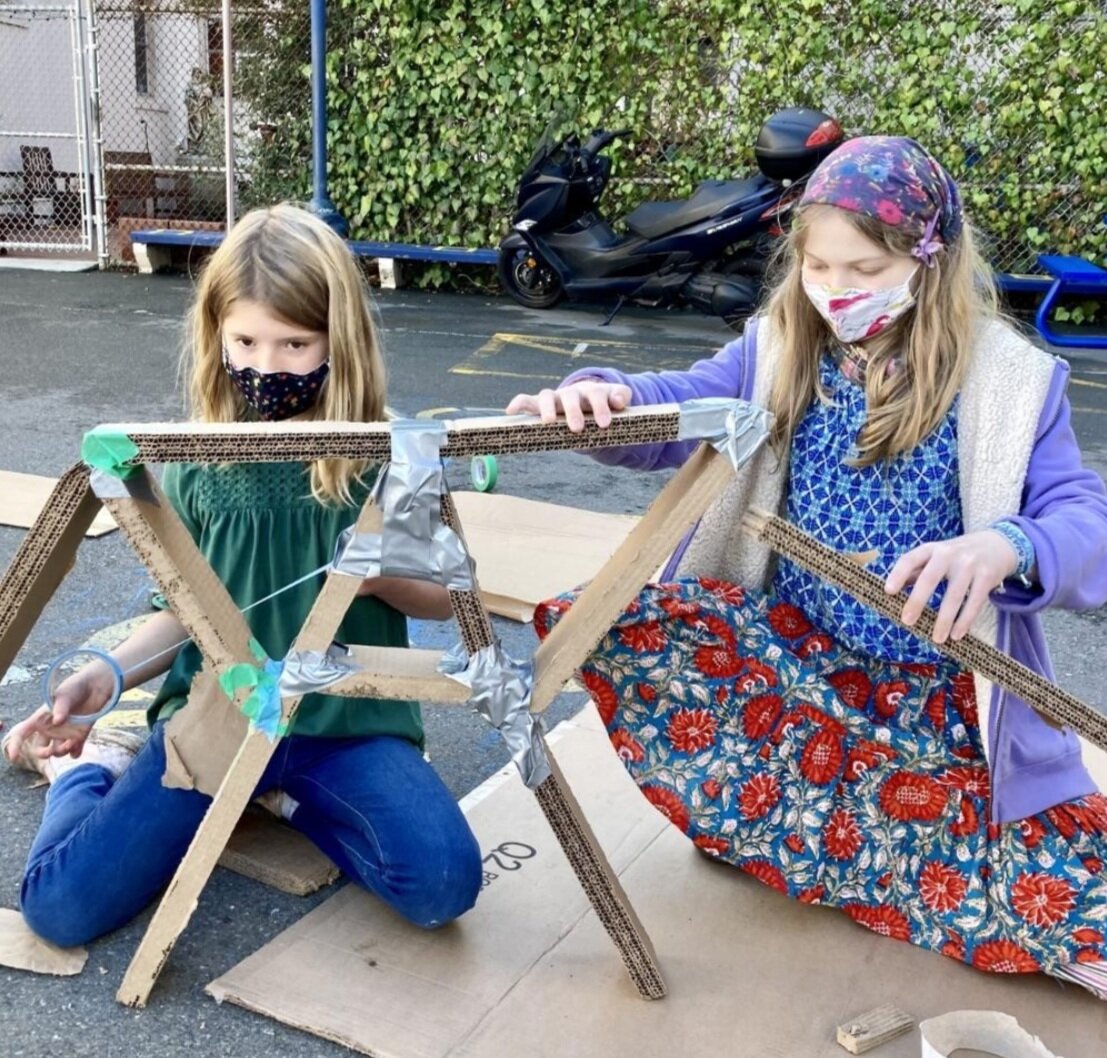Middle School
Middle school students (11-13 year olds) build on foundational academic skills to venture into more independent work with collaborator guidance and a focus on group participation. Learners are challenged to think harder and bigger about connections between academic disciplines in projects that are larger in scope and that rely on expert texts and mentors to guide their iterations. Projects provide opportunities for students to practice collaboration, growth mindset, iteration, project management and reflection.
Project-Based Learning
Project-based learning in middle school builds students’ ability to manage their own projects by providing the scaffolding for independent work. Through scaffolded projects, middle schoolers observe, test out ideas, make connections between disciplines, and tackle big ideas in an interdisciplinary approach, and reflect on their own individual learning goals and outcomes. Students are challenged to think harder and bigger about their academic work, and they stretch their minds with more complex ideas and projects that help them maintain the curiosity that they had as younger students. We expect that students arrive open-minded and willing to participate, even if the topic doesn’t initially spark their interest, and seek to work with them to find in-roads to engagement and interest.
During the Exploration phase, collaborators listen to students’ ideas and interests based on initial curriculum plans, and create opportunities to explore deeper with the use of a variety of materials, experts, and experiences, while understanding the developmentally-appropriate academic learning goals that set middle schoolers up for success. Students express ideas and explore topics through various written, verbal, or experiential materials, and represent their findings through many media. They are also often responsible for teaching their peers and practice effective communication in a low-stakes learning environment where it’s clear that everyone is working to their own ability level. Experiences are differentiated individually and in small groups depending on interest and learning needs.
During the Expression phase, students come up with new ideas for how to represent their learning in both group and independent projects with multiple steps and opportunities for learning and exploration. Collaborators facilitate goal setting and projects through choosing a set of constraints that challenge students to surpass their own expectations while remaining within a reasonable scope. During the process, students practice flexibility and compromise in collaborating, making schedules, setting goals, iterating, completing tasks, and giving and receiving meaningful and constructive feedback. At the deadline, students work with their collaborators to reflect back on their learning through assessment and feedback.
Self-Directed Learning Expectations
Demonstrate increasing sophistication in directing their own learning by working with collaborator to set goals and manage their tasks, set a schedule to accomplish next steps, and maintain focus with minimal to no supervision from adults
Take initiative to move forward in work with minimal to no prompting, ask for help when needed or stuck, and is prepared to complete tasks while at school
Seek feedback from peers, experts, and collaborators and revises accordingly, and offer meaningful and respectful critique to peers
Document and reflect on their progress and final product to tell a compelling story about their learning
Social Emotional Learning
With perspectives, bodies, and minds all changing at once, middle school can be one of the most turbulent, confusing times in a student’s life. At Brightworks, we seek to establish a middle school culture that honors these changing adolescents as whole people with vibrant ideas, real emotion, and engaged minds, meeting each child where they are and encouraging them to continue to be brave by showing their true, wacky, vulnerable selves to the world.
Through proactive discussions and community circles, students practice respectful and friendly behavior and communication that helps students in social situations, in expressing ideas, and in making new friends, and in cooperation during group activity. From the outset, student voices and experiences are honored and taken seriously so that the vulnerable work of sharing ideas, taking risks and trying new things is done in a community that cares, understands, and supports students as whole people with many identities that make up who they are. When conflicts occur, resolution focuses on acknowledgement and legitimacy of emotions, and on repair and restorative justice between students.
Students will...
Practice self advocacy by respectfully representing themselves and their ideas, navigating social situations with care, and effectively communicating with others
Practice being a positive community member by cultivating relationships with same-age peers, students of mixed ages, and adults in the space, being a positive role model, and taking ownership of the physical school space
Practice collaborating with others through compromise, sharing ideas, valuing and being mindful of others’ points of view, backgrounds, and input, seeking diverse perspectives, and offering authentic encouragement, appreciation, and gratitude
Practice flexibility by being able to compromise on ideas, change their minds about a difficult topic, and being aware of needs other than their own
Academic Toolbox
Taking inspiration from organizations like the Common Core, the Next Generation Science Standards, Learning for Justice, the International Society for Technology in Education, and a decade’s worth of managing students’ projects, Brightworks follows these general learning expectations for our middle school students with the goal of fostering thinkers who can make connections between each traditional subject area in a multi-modal and interdisciplinary way. These expectations serve as landmarks to reference along the learning journey.
Middle schoolers pursue more complex thinking in language arts, mathematics, engineering, science, and art, using multiple modes to explore divergent perspectives and opinions other than their own. As they grow through these three years of middle school, they increase their academic rigor and project management skills in order to be ready for high school, and they increase their leadership skills to serve as role models and stewards of this unique community of a mixed-age school.
Social Studies & Civic Engagement
Demonstrate appreciation for others’ differences in experience and understand that words, behaviors, rules and laws that treat people unfairly based on their group identities cause real harm.
Navigate the online world and explore how it is both helpful and harmful on an individual and global level, responsibly use digital information and online presence, practice identifying bias and false information, and reflect on the media’s influence on current culture
Explore themes, ideologies, and world events through eras, cultures, nations, groups of people, and reflect on how these impact current day social justice, social advocacy, and social change
Demonstrate appreciation for others’ differences in experience and understand biased words and behaviors and unjust practices, laws, and institutions limit the rights and freedoms of people based on their identity groups.
Literacy & Communication
Read a variety of fictional and nonfictional texts from multiple perspectives to make connections between ideas, real-world events, and lived experiences, and to enhance understanding of context, bias, perspective, and style
Use textual evidence to support an idea in discussion or writing about literature, nonfictional texts, and scientific writing, and make connections across disciplines to support a point
Writes with correct grammar, language conventions, and sentence structure to share information and opinion, reflect on learning and progress, and contact experts
Report on learning and progress in informal conversation and formal presentation
Digital Literacy
Understand how to use the school-provided Google suite (email, docs, slides, sheets, etc), basic computer functions, demonstrate the ability to choose, use and troubleshoot current technologies, and transfer knowledge to explore emerging technologies.
Use technology to curate accurate information for research, understand how to assess source credibility, and present their findings with the appropriate digital tools that appeal to their audience
Cultivate and manage their digital identity and reputation, are aware of the permanence of their actions in the digital world, and engage in positive, safe, legal and ethical behavior when using technology, including social interactions online or when using networked devices.
Scientific & Mathematical Fluency
Practice using the scientific method to describe and test theories about the physical, biological, and geological world
Understand ecosystems, evolution, energy and force, how humans have impacted climate change and our global responsibility to changing policy and habits
Understand how to use objects, models, symbols and diagrams to express math ideas and have a strong sense of how numbers work in order to compute, represent, predict, and interpret solutions
Practice using real-world data to make predictions and models, and become comfortable with algebra terminology as well as what algebraic equations represent
Problem Solving & Analysis
Develop and use models, plan and conduct investigations, analyze and interpreting data, use mathematical and computational thinking, and construct explanations and use these practices to demonstrate understanding
Practice design thinking based on initial, real-world questions, and prototype and model designs as solutions to those questions
Create multiple iterations of solutions to problems that change in each version from a combination of reflection on successes and failures, peer critique, and feedback from the intended users to create better and more effective designs
Explore mathematics through models and discussion to understand how numbers work, to connect models and equations to other procedures and problems, and to reason through math tasks, analyze data, discover insights, test hypotheses, and draw conclusions
